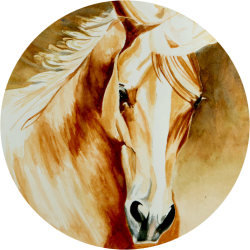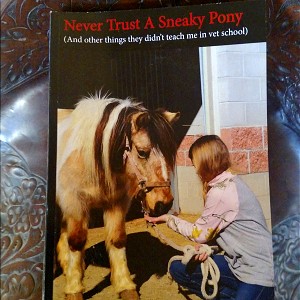Winterizing Horses
By Madison Seamans MS DVM
Fall. You know it is here even if there is no thermometer handy. Horses, with tails over their backs floating over frosted grass, steam forced from flared nostrils like they really are the fire-breathers they think they are. New winter hair stands on end thanks to the piloerecter muscles strategically located at the base of each strand. These automatic heat shields make them look more like fuzzy stuffed animals than athletes. Nature protects these beautiful creatures far better than anything devised by man, but domestication brings with it added responsibility. This is where the equine veterinarian can help.
Most horses have worked pretty hard over the past summer, jumping, cutting, “dressaging” or packing eager campers in to the high country. But the advent of cooler weather presents management challenges for those of us fortunate enough to live with horses. We may think of snow tires and lift tickets, but our horses also need some consideration in their transition to cooler weather. A comprehensive wellness exam by a veterinarian is a necessity this time of year and should include: vaccines, nutritional consult, and a quick dental checkup.
Although there are many vaccines on the market, we have become quite conservative in the use of these immunologic agents over the recent few years. The American Association of Equine Practitioners (AAEP) publishes vaccine guidelines which are updated regularly as new science elucidates the effectiveness, or lack thereof, of these drugs. Vaccines are not harmless compounds. They modify the immune response in ways not well understood in any species. For example, twenty years ago the recommendation was to vaccinate foals at eight weeks of age. Now we know this is not good for the developing immune system. Practicing members of the AAEP stay current on the latest data concerning this and other aspects of horse health so we can provide the best possible care for horses. Our current recommendation for vaccines is:
- Annual: Tetanus, Sleeping Sickness (Eastern and Western Equine Encephalomyelitis) West Nile Virus, and Rabies
- Twice-yearly: In some areas, (like public boarding facilities or show barns) Influenza vaccines have been of limited benefit. Only use the IgA directed flu vaccines, you may need help locating them. Call me.
Nutrition is a topic often neglected in discussions of horse health. In reality, it is the most important aspect of equine health. What is the most important nutrient? This is not a trick question, but the answer surprises some people. Water. Some horses may argue this point, but they can live longer without eating than they can without drinking. Frozen pipes for automatic waterers or frozen water tanks are not any better than a dry trough. It is important to keep water sources flowing in cold weather and equally important to check electric heaters. A short circuit can shock horses as they drink, and that will cause obvious problems.
Autumn is a good time to check teeth, as dental care can be neglected during the hectic pace of summer. Cool weather increases the caloric requirement of horses up to 25% when the temperature stays below forty degrees. This is especially true in older horses that have difficulty maintaining weight. Some of our “seasoned equine citizens” need a blanket and more forage in the cold weather to preserve body heat and weight. It is important that wet blankets are removed and replaced with dry ones, or left off the horse completely when the sun comes out (if it ever does).
Show horses present another set of management challenges, as judges don’t like fuzzy, they like fat and slick. The hair coat comes in thick due to changes in photoperiod. Cold weather coincides with short days, thus longer coats. In reality, this means eight hours of darkness mimics the warm season photoperiod and will produce a relatively thin coat. So keep show horses in the barn with extra lighting. Don’t forget to turn off the lights, as it is the eight hours of darkness that fools the pineal gland into thinking it is spring. A shorter hair coat can make a cold horse, so blankets are a must.
Finally, it is important to observe horses frequently, especially this time of year. When the thermometer dips below zero and it is snowing sideways, it is tempting to throw the hay over the fence and head for the house. However, a quick look at the water source and giving “Ole Buck” a once over to make sure he is eating with his normal interest and vigor can avoid a train wreck later. Let not your heart be troubled the sun will come back and we will all thaw eventually!

